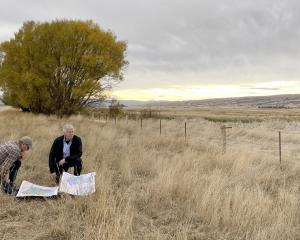New Zealand's economic growth is slowing and there are doubts even the Government’s substantial fiscal stimulus being delivered will result in a significant increase in the rate of expansion.
BNZ head of research Stephen Toplis said supply issues such as physical capacity constraints, infrastructure bottlenecks, a low unemployment rate and declining working age population growth were major factors behind the softening.
In turn, those drivers created a modicum of inflationary pressure which was exacerbated by a weakening currency and government charges increases.
Against that backdrop, the Reserve Bank seemed to reluctant to shift interest rates and appeared to be keen to use the full flexibility an inflation target range permitted, he said.
The Reserve Bank had a policy targets agreement with the Government to keep inflation between 1% and 3%, with the mid-point of 2% seen as the ideal rate.
New Zealand’s GDP rate was stagnating at what was about trend, Mr Toplis said.
Slowing population expansion was acting as a significant moderating factor and was already playing a part in slowing private consumption and employment growth.
Weak business sentiment, if sustained, would also prove problematic, with anecdotal evidence suggesting investment decisions were being postponed.
"In part, this is due to some concern over government policy but also reflects, more generally, pressure on profits, as margins are squeezed by rising input costs."
The outlook was not all negative, he said.
There remained momentum in the economy. The Government was providing substantial fiscal stimulus and monetary conditions were not only stimulatory but were also easing further.
The labour market remained tight. The unemployment rate rose to 4.5% in June from 4.4% in March, but simply because the participation rate rose.
Annual employment growth was a robust 3.7%, Mr Toplis said.
Employment was expected to slow markedly to below 2% by late next year.
"This does not so much reflect a drop off in demand but rather a shortage of supply. We still think the unemployment rate will remain at or below current levels for some time to come."
Tightness in supply, coupled with the rising minimum wage and relatively high state sector wage settlements, should see labour cost measures rise, he said.
Consumer price inflation was moving higher. Annual inflation rose to 1.5% in June from 1.1% in March. The BNZ was forecasting inflation to be above 2% by the end of this year and stay or move above that level for the foreseeable future.
Most of the upward pressure was coming from the current pressure on corporate margins as input costs rose because a combination of rising global inflation, a weakening New Zealand dollar, increasing labour costs and Government-imposed changes.
The big question was whether corporates responded by reducing labour, resorting to capital/labour substitution or increasing selling prices. There would likely be a combination of all three, Mr Toplis said.
The Government was providing major stimulus to the economy through its commitment to infrastructure spending and the significant transfer to the household sector largely through increased welfare payments.
Despite the extra stimulus, Crown surpluses were forecast to rise and net core Crown debt was expected to fall to 20% of GDP by 2022.
In the opinion of the BNZ, far too much focus was being placed on the debt target, he said.
The debate should be more about the quality of the fiscal decisions rather than the level of the target.
"This will become particularly pertinent soon as we do not think the Government’s fiscal targets can be met."
GDP growth appeared likely to surprise to the down side, eating into revenue forecasts. The demands on expenditure would only rise, Mr Toplis said.












